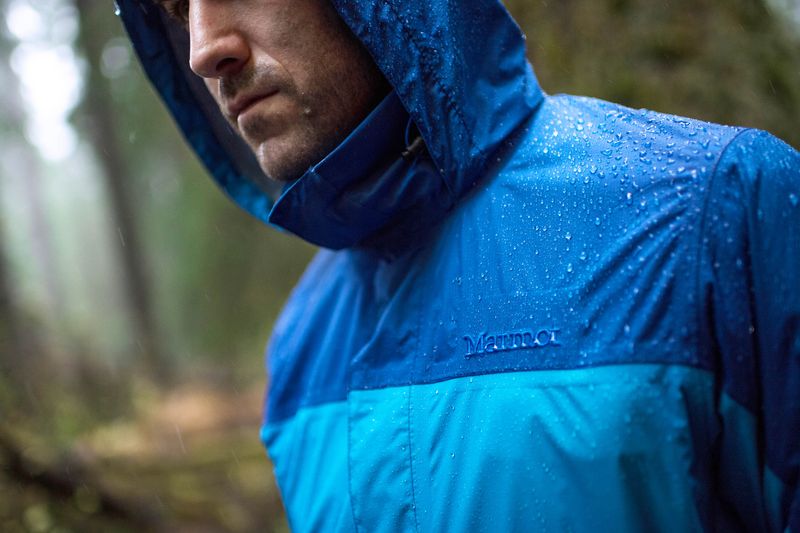Contents
Waterproof without harmful fluorocarbons
They are found in outdoor and work clothing, cookware, ski wax or pizza boxes: perfluorinated and polyfluorinated compounds, or PFC for short. Due to their special properties - they are water, dirt and grease repellent - they are used as impregnation in a wide variety of products. However, the chemicals are by no means harmless. They are hardly degradable and some of them are even harmful to humans. That is why many manufacturers are working on making their products PFC-free.
What are PFCs?
Fluorocarbons, as poly- or perfluorinated chemical compounds are also called, have been used in outdoor products since their invention in the 1960s. Their impregnating function makes surfaces of jackets, shoes or backpacks water, dirt and oil repellent. But these practical properties have a downside. PFCs can be harmful to both the environment and health.
The main problem is the extreme persistence of PFCs, i.e. their long service life. The stable compounds between carbon and fluorine can not be dissolved under environmental conditions and can therefore not be degraded. Once released into the environment, they accumulate in soil and groundwater and can also be deposited in the edible parts of plants. In addition, the chemicals also spread far from their original sources. PFCs can now be detected even in remote mountain lakes, glaciers and in the blood of polar bears. PFCs are also absorbed by humans through drinking water or food. Some fluorocarbons are harmful to health. They can be carcinogenic and have a negative effect on fertility.
How can dangerous substances be detected?
There is a list from the Federal Environment Agency in which hazardous chemicals are entered. Distributors or manufacturers are obliged to provide information about particularly worrying PFCs in products. The European REACH regulation specifies which chemicals are dangerous and decides on the necessary measures.
What alternatives are there for PFC?
Outdoor fans are concerned about the environment and its protection, but at the same time they do not want to sacrifice functionality in their equipment. That is why it is important to find alternative, environmentally friendly methods for impregnating outdoor clothing. Some manufacturers have already succeeded in doing this with the help of innovative technologies.
For example, Nikwax has developed highly functional directional material systems to eliminate the need for membranes. These can wick perspiration and moisture in liquid form from the inside to the outside while providing powerful weather protection. Sympatex has been producing PFC-free finishes since 2008 and uses paraffin, urethane and dendrimer-based developments for the DWR impregnation Bionic Finish® Eco. The manufacturer Vaude ensures the waterproofness of its products with its own Eco Finish. Its Ceplex Green membrane also uses recycled and bio-based materials instead of fluorocarbons to make the products breathable, waterproof and windproof.
An important step in 2017 was also the announcement by Gore Fabrics, the market leader in weatherproof technologies, that it will no longer use PFC in future. By 2020, 85 percent of products are to be manufactured without the pollutants, and completely PFC-free production is planned from 2023. Since Gore-Tex products are used by almost all major outdoor brands, Greenpeace sees this decision as a huge step forward in the changing industry. Brands such as Schöffel or Haglöfs already produce partly PFC-free and want to work completely without the harmful chemicals in the near future.

